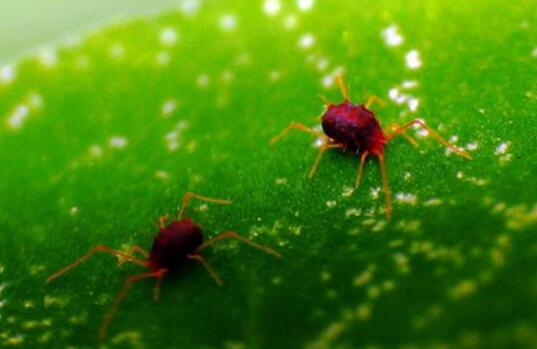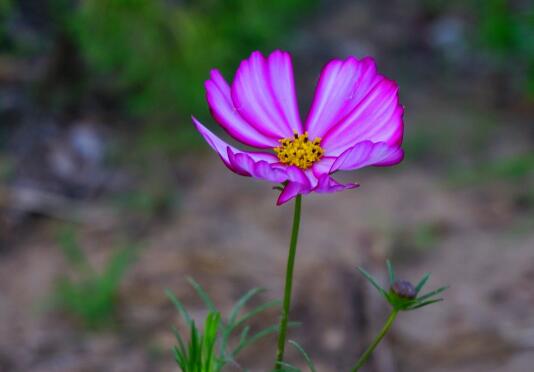What should we do if the money tree grows worms? pest control of the money tree / 2 insect pests and 5 diseases
Raising a pot of plants indoors has become a popular trend nowadays, and the cash cow is not only a long beauty, but also a good meaning, so it is the choice of many families. However, in the breeding process, many of the flower friends 'cash cows will grow insects and get sick, which seriously affects the ornamental nature. So what about bugs growing on the cash cow? Here are 7 kinds of cash cow pest control, go in and see!
1. Money tree worm, drug spray

Indoor is not better than outdoor, if not according to the cultivation method of cash cow to maintain, plus high temperature, high humidity environment, cash cow will grow insects sick, then what to do at this time? In fact, it is very simple, we just need to determine which pest is, and then spray medicine can be. The details are all in the pest control of cash cow. Let's look down.
2. Control of diseases and insect pests of cash cow, 2 insects and 5 diseases
1. Scale insects
The most common occurrence of cash cow is the harm of scale insects, which are easy to break out in poorly ventilated environments. The insect pierces the leaves with its mouthparts and sucks the sap from the leaves of the cash tree. Symptoms of infringement: cash cow leaves yellow, serious plant will die.
Control methods: when the scale insects are few, alcohol can be used to gently rub the diseased plants repeatedly to get rid of them; when the pests are many, dichlorvos 1000-15000 times liquid or 50% marathon emulsion 1000 times liquid are sprayed immediately for control.
2. Aphids
One of the main pests of cash cow, it mainly damages leaves and buds, absorbs a lot of juice, and leads to poor growth of cash cow. Because aphids breed a lot, they are usually found in dense, not only scary, but also very disgusting.
Control methods: found a small number of aphids, available brush dipped in washing powder brush; aphids more, spray 40% omethoate EC 1000 times solution, or 50% fenitrothion EC 1000 times solution for control, the effect is good oh ~
3. Brown spot disease
The main disease of cash cow, it mainly damages leaves. Disease symptoms: lower leaves begin to disease, gradually spread to the upper part, the initial round or oval, purple-brown, late black; serious, cash cow leaves yellow off, affecting flowering.
Control method: After the above diseases are found, spray 50 times of carbendazim wettable powder or 500 times of 25% chlorothalonil every 7-10 days, 2-3 times can be effective.
4. Stem rot
A disease that damages the stem of cash cow. It is generally spread by sprinkling water. It is easy to get sick when moisture stays for a long time. Symptoms: The stem or base of the stem of the cash cow rots and causes the whole plant to die rapidly.
Prevention and control methods: found the above diseases, can spray 27% copper noble suspension 600 times liquid; serious disease, in the spraying, but also add some Qingkulike or hymexiline, the effect is good.
5. Late blight
One of the main diseases of cash cow, it occurs in July and August, mainly damaging the lower leaves. Symptoms: The tip of the leaf is dark green at the beginning, and the water-soaked spot is not shaped. After expansion, it turns brown. Under high humidity condition, there was white mold at the junction of leaf back disease and healthy part.
Prevention and control methods: timely cut off the diseased leaves, and concentrated burning or soil burial to reduce the source of disease. When the disease occurs, 600~700 times solution of 72.2% PULIKE can be sprayed for prevention and control.
6. Freezing injury
In addition to the above diseases and insect pests, cash cow trees are also vulnerable to freezing damage in winter. In winter, when the temperature is lower than 5℃ and the basin soil is somewhat wet, the cash cow is easy to freeze, lodging occurs, and it can cause rot in severe cases.
Control methods: In winter when the temperature is low, the cash cow will be moved to indoor maintenance, and keep the room temperature above 10℃, after less watering to keep the pot soil dry.
7, burned.
In summer or sunny weather after rain, the cash cow will also be burned. Generally, burns occur, and the leaves of the cash cow will appear to fade green and turn white, and in serious cases, they will turn black.
Prevention and control methods: in the strong light, timely on the cash cow shade.
What to do when Yushu flowers grow insects, Yushu flower pest control/2 pests 2 diseases
In the growth process of Yushu flower, the last thing we want to encounter is diseases and insect pests. Such problems are very harmful to plants, which not only affect the ornamental property, but also lead to the phenomenon of death when it is serious. So what if Yushu flowers grow worms? What do you need to do to control the pests and diseases of Yushu flowers? The following small series takes everyone to understand.
I. What should I do if Yushu flowers grow worms? Find out the reason.
If you want to know what to do when Yushu flowers grow insects, first of all, we need to know what insects grow, so that we can carry out targeted treatment. Common Yushu flower diseases and insect pests include scale insects, brown soft scale insects, leaf spot diseases and anthracnose diseases. Their specific control methods are as follows. Let's take a look below.
II. Prevention and control of diseases and insect pests of Yushu flowers (pests)
1. scale insects
Scale insects are a common pest in the growth process of Yushu flowers. They mainly threaten the leaves, branches and fruits of Yushu flowers, causing their leaves to gradually turn yellow and fall off. Finally, the whole Yushu flowers will gradually wither.
Prevention and control methods: We can directly use 40% omethoate emulsion 1000 times solution to spray it when dealing with this kind of Yushu flower pests and diseases, and the effect is very good.
2. brown soft scale
Brown soft scale is a kind of insect of wax scale family. It usually lives in groups on the leaves or tender leaves of Yushu flower. It will gradually suck the juice of the plant and excrete mucus at the same time. Its excrement is easy to cause a large number of coal pollution bacteria to multiply, making the stems and leaves black, and seriously affecting the growth of the plant.
Control methods: For this kind of Yushu flower pests, we can use 50% monocrotophos EC 1000 times solution or 50% fenitrothion EC 1000 times solution to directly spray it.
III. Prevention and control of diseases and insect pests of Yushu flowers (diseases)
1. anthracnose
Anthracnose mainly occurs on the leaves of Yushu flowers. In the early stage of the disease, there will be many yellow spots like water stains on the leaves, which will expand into oval to irregular brown or yellow-brown spots. In the later stage, the spots will connect into a piece, resulting in dried leaves and small black spots arranged in rings.
Prevention and control methods: This disease is mainly caused by poor ventilation in the maintenance environment, so we must keep the environment ventilated when breeding. As for the treatment of this disease, we can use 70% thiophane 1500 times solution to spray the disease, generally spray once a week, 3-4 times can be cured.
2. leaf spot
Leaf spot is a disease caused by fungi. Many brown spots appear on the leaves of Yushu flowers when the disease occurs, and gradually spread over time, resulting in the death of the plant.
Control methods: For this kind of Yushu flower pests, we can use 50% carbendazim 1000 times solution to spray it, usually once every 7-10 days, 2-3 times later can be cured.
How to deal with the long insects of Sophora japonica, pest control of Sophora japonica/2 pests, 2 diseases, how to deal with the long insects of Sophora japonica, find out the reasons
If you want to know what to do when Sophora japonica grows insects, first of all, we need to know what insects grow, so that we can deal with them in a targeted manner, because the pest control methods of each kind of Sophora japonica are different. The specific details are introduced below. Let's take a look below.
II. Pest control of Sophora japonica (pests)
1. Scythophora japonica
The locust scale moth is a leaf-eating pest, and its high incidence period is in the summer of each year, so at this time everyone must pay special attention. This pest mainly feeds on the leaves of Sophora japonica and can even cause plant death in severe cases.
Control methods: In dealing with this kind of locust pests, we can use 50% fenitrothion emulsifiable solution 1000-1500 times for larvae to spray them. If there are more pests, we can use dichlorvos intubation smoke to fumigate.
2. aphids
Aphids are a kind of plant-feeding insects, which mainly suck the sap from the leaves of Sophora japonica, which causes the leaves to gradually turn green, and in serious cases, it also causes the leaves to continuously shrink and fall off, and also affects its flowering.
Control method: For this kind of locust tree pest, we can use 50% anti-aphirimidine wettable powder 3000 times solution or 50% marathon emulsion 1000 times solution to spray it.
III. Prevention and control of pests and diseases of Sophora japonica (diseases)
1. canker
Rot disease is also called rotten skin disease, which is a common disease of Sophora japonica. The occurrence of this disease is irregular and may occur in various seasons. Many small black spots will appear on the trunk when the disease occurs, and will gradually spread to the lower part over time, finally leading to gradual decay of the plant.
Prevention and control methods: in dealing with this kind of pagodatree pests, we can use a bottle of mother liquor and 30 kilograms of diluent, and then smear on the plant, generally about 15 days of medication once, 2-3 times can be cured.
2. scorched leaf disease
Scorched leaf disease is mainly harmful to the leaves of Sophora japonica. When the disease occurs, the edges of the leaves will turn yellow, and many brown spots will be produced, which will gradually spread over time and finally lead to the gradual withering of the plants.
Control methods: For this kind of locust flower disease and insect pests, we can use chlorothalonil 800 times solution or Meike 3000-4000 times solution to spray the diseased plants, generally spray once every 7-10 days, about 3 times can be cured.
- Prev

Disease and pest control of dragon blood tree, red spider / scale insect / black spot / prevention is very important
The dragon blood tree is more sensitive to changes in the environment, and sometimes it will cause some diseases and insect pests because of the improper cultivation method of the dragon blood tree, resulting in yellowing, withering and falling leaves, which makes the flower friends very distressed. So what to do when the dragon blood tree encounters pests and diseases? Let's take a look at the prevention and control methods of diseases and insect pests in Dragon Blood Tree.
- Next

What about the long worm of Persian chrysanthemum? disease and pest control of Persian chrysanthemum / 2 insect pests 2 diseases
When we cultivate Persian chrysanthemum, the last thing we want to encounter is the problem of diseases and insect pests, which do great harm to the plant. If we don't deal with the plant in time, the plant will gradually die. What about the Persian chrysanthemum worm? How to do the pest control of Persian chrysanthemum? Next, the editor will take you to learn about it.
Related
- Fuxing push coffee new agricultural production and marketing class: lack of small-scale processing plants
- Jujube rice field leisure farm deep ploughing Yilan for five years to create a space for organic food and play
- Nongyu Farm-A trial of organic papaya for brave women with advanced technology
- Four points for attention in the prevention and control of diseases and insect pests of edible fungi
- How to add nutrient solution to Edible Fungi
- Is there any good way to control edible fungus mites?
- Open Inoculation Technology of Edible Fungi
- Is there any clever way to use fertilizer for edible fungus in winter?
- What agents are used to kill the pathogens of edible fungi in the mushroom shed?
- Rapid drying of Edible Fungi

